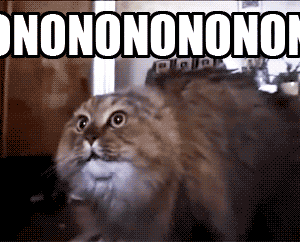Visitors to the Science Gallery at Trinity College in Dublin, Ireland, last year were confronted with an unlikely sight at the entrance: four small refrigerators, each holding an artisan-style cheese presented on an elegant wooden board.
The gallery viewers had the choice to examine each cheese. Do you fancy the whey cream cheese labeled “Christina,” or perhaps “Ben,” a natural-rind cheese? Odd names, but the cheeses themselves are perhaps even stranger. They’re named for the people who swabbed between their toes, in their mouths, armpits, and belly buttons to gather bacteria to make the cheese.
“These are not cheese for eating,” explains microbe donor and co-creator of the cheese project, Christina Agapakis. “They are cheeses for thinking.”
The cheese-for-thinking project is called Selfmade, and is a collaboration between Agapakis, a microbiologist who just finished her post-doctoral training at the University of California, Los Angeles, and Sissel Tolaas, a smell researcher, artist, and “professional provocateur.” It went on display as part of the Grow Your Own exhibit at the Science Gallery in the fall of 2013, but since then has taken a life of its own in the form of countless articles and a book called Synthetic Aesthetics: Investigating Synthetic Biology’s Designs on Nature, released this spring.
In a video describing their work, Tolaas explains: “We all know that cheese and body smells are associated. You say, ‘You have a smelly feet—you have cheesy feet,’ for example.”
“Sissel and Christina’s provocation in their work is that human microbiology is gross, out of place,” Alexandra Daisy Ginsberg, a London-based artist and designer and lead curator of Grow Your Own, said. But after the initial wave of revulsion, the astute gallery-goer may realize that the work holds a deeper message. It tells us about our reactions to biology, how we can—and whether we should—engineer and design life, and about our intimate relationships with microbes, food, and smells.
Visitors to Selfmade. Screengrab from Science Gallery Dublin/Youtube.com
Step 1: Learn about cheese making
Before we get into the science of cheese, let’s go over the basics how it’s made.
First you need a lactating mammal. Some species will be easier to make cheese from than others. Human cheese isn’t recommended because it probably won’t work: “Breast milk alone can’t be made into cheese because it contains too little protein (only 1 percent), and only some of the protein is casein,” Michael H. Tunik, a research chemist at the U.S. Department of Agriculture, told wired.com.
Casein creates curds, which are actually tangles of protein. The liquid left behind when the casein gets together is called whey. “Research in our laboratory some years ago demonstrated that human milk will not form a curd,” he said. (Though someone figured out how to do it anyway.) In general, the best cheeses are made from milk from cows, sheep, goats, and buffalo.
Next you need to coagulate that milk. That process can require lactic acid (already present in the milk, though adding more can help), bacteria or enzymes. Heat can help the enzymes work faster. Separate the curds from the whey, perhaps by straining through cheesecloth. Put the curds into a cheese mold or form to give your cheese shape. Once it is shaped, you could eat it. Or, you can do a number of things to age the cheese and make it more complex. A ton of great videos offer insight into the whole process, from milking and crafting to cave aging. You can even get a peek into large-scale cheese production.
Those cheeses are fine and dandy, but for human bacteria-based cheese we need to delve deeper.
Step 2: Appreciate the cheesy microbes
Take a deep whiff of the next cheese you encounter. This exercise will be more interesting if you choose an artisanal cheese rather than mass-produced cheddar. What does it smell like? Draw the molecules deep into your nose until they hit a special patch of tissue called the olfactory epithelium. Here the molecules meet thousands of neurons studded with proteins that detect smells—your olfactory receptors. The cheese particles will stick like keys into locks and trigger the neurons to fire. Messages about the smells are conveyed deep within your brain in the amygdale, an almond-sized brain bit that is also home to your emotional memory. This deep wiring of our sense of smell sometimes makes it hard to articulate the feelings we get from certain scents, but if you train your nose you can get it: milky, barnyard, gasoline, gym socks. Whew, what a funky cheese. Yet for some, the stinkier, the better.
For example: A guide to stinky cheese on Serious Eats describes the smell of Ardrahan, an Irish washed-rind cheese, as ranging “from lightly barnyard, to peanutty, to full on funk.” Of California-based Cowgirl Creamery’s Red Hawk cheese, author Benjamin Roberts writes, “Like most washed-rind cheeses, if you pay close attention and eat it at its ripest, you will be rewarded with a milky, fruity, funky cheese that’s reminiscent of Alsatian muenster.”
A similar article on igormet.com has this to say about Pont L’Eveque, a French cheese: “Aged for 45 days and one of the smelliest cheeses in the world, this creamy pale yellow cow’s milk cheese is rich, buttery and savory in flavor.”
The most pungently aromatic cheeses tend to be those in the “washed-rind” category. When the cheese makers craft these beauties, they bathe them in brine, sometimes spiked with wines, spirits, or herbs. That washing during the aging process creates a complex rind and influences the flavor, texture, and aroma of the finished cheese.
Research published in the journal Cell earlier this month examines the complex communities of bacteria and fungi that grow on cheese and create the rind. (The full paper is available behind a paywall.) The researchers scraped the sometimes fuzzy, sometimes slimy, sometimes hard rinds of 137 different cheeses from 10 countries and cultured the major microbial players in the lab. The researchers grew versions of these cheese communities in the lab to observe how they are formed and how they stay alive.
Studying the patterns and structure of microbes on cheese can help researchers figure out how communities in other place—such as the ocean, soil, or the human body—grow, said Rachel Dutton, a researcher in systems biology at Harvard University, and one of the paper’s authors.
Most microbial systems are difficult to culture in the lab, but cheese we know how to do. “Working with cheese provides this incredible opportunity to move from looking at patterns of diversity, which we can do with lots of microbial systems, to actually being able to test where these patterns come from,” said Benjamin Wolfe, the paper’s first author and a postdoctoral fellow at Harvard.
Ever alert to cheese science happenings, Agapakis blogged about the paper over at Scientific American:
Cheese is an amazing microbial ecosystem, created by the interaction of microbes that have been domesticated over thousands of years and “wild” microbes from the farm, the sea, and the aging cave. They are “seminatural” ecosystems shaped by the environments that cheesemakers build to nurture particular flavors and textures. Now they are also experimental ecosystems, where we can learn how to design and shape new microbial relationships.
Now that you know more about cheese microbes than you ever anticipated, let’s get a little more personal.
Step 3: Discover the microbes on your body
Wolfe, Dutton, and their colleagues found that about 25 percent of the fungi and 60 percent of the bacteria found in these microbial cheese communities were not those introduced by the cheesemakers to create the cheese. They were piggy backers. But from where did they piggy?
Some may have washed in with the salty brine used to age the cheese. Others were present in the milk itself. Still others may have come from the cheesemaker’s hands. Yup, eating “normal” cheese already includes microbes that live on humans.
Agapakis and Tolaas discovered this fact early on during their collaboration. It was a natural direction for a microbiologist interested in how bacteria interact and a smell artist fascinated by body scents.
“We are kind of Googling around for what makes armpits smell like armpits, what makes feet smell like feet,” Agapakis said. “And as we are Googling the names of bacteria one of the first things that would pop up would be cheese.”
One molecule called isovaleric acid appears in reference to Swiss cheese and to the smell of stinky locker rooms or sweaty feet. The two collaborators kept finding more connections between bacteria that live on our bodies and on cheese.
Sissel Tolaas smelling cheese. Screengrab from Science Gallery Dublin/Youtube.com
Ultimately, those connections make sense. Bacteria on our skin live off of natural oils and give our body odor. “The smell that you smell is the breakdown of fats and proteins,” Agapakis said. Milk also is rich in fats and proteins. The logic of this intensifies when you consider that humans made food throughout history by touching it with with their hands. Sometimes that food went bad (cheese really is controlled spoilage of milk), and people ate the microbially enhanced food. Agapakis calls it a kind of domestication of microbes.
Inspired, Agapakis and Tolaas set out to make cheeses using the microbes on human bodies. They made about 10 small cheeses from donors around that lab. Agapakis would take those first cheeses to meetings and cheese shops to provoke discussions about microbes, bodies, and food. Several years later the project matured into Selfmade, which was shown in the gallery in Dublin. There, the cheeses were made from bacteria donated by artists, scientists, cheesemakers, and other members of the food community, including Michael Pollan.
Agapakis and Tolaas’s collaboration was featured in two chapters of the Synthetic Aesthetics book, which was co-authored by Ginsberg, the exhibit curator, and four other people: Jane Calvert, Pablo Schyfter, Alistair Elfick, and Drew Endy. The book describes how the two collaborators solicited volunteers to sniff the cheese and describe what they smelled. Cheese made from hand bacteria was described as smelling like “yeast, ocean salt, sour old cheese, feet.” Armpit bacteria created a cheese that was “neutral, perfumed, industrial, synthetic, fermentation, car pollution, sharp, chemical.” Different bacteria produced different smells, but even cheeses with similar microbes had unique scents. This observation indicates that other microbes not detected by their measurements could be contributing to the smell.
Each microbe Tolaas and Agapakis found has an interesting profile. For example, Hafnia alvei is found in the armpit and smells like “sour, salty, corn tortillas, old leather couch, musty, gym mats.” It can also be found in the human gut, a cauliflower flavor additive for cheese production, yellow catfish stomachs, and the feces of the pygmy loris.
Ginsberg wrote a response to the cheese project in another chapter of the book: “I had never realized that cheese was still often made with bare hands dug into the pure, white milky curds, or that those same hands vigorously scrub salt into the rinds of maturing cheese. With a modern preference for remotely processed, sanitized, quality-controlled, and comfortingly uniform food, the idea that someone else’s name, bacteria rich skin should touch, let alone improve, food seems almost horrifying.”
Step 4: Prepare yourself for other people’s reactions
Ginsberg quickly moved from disgust to fascination with the project, but her reaction is typical. Disgust is a basic human response that plays a big role in our everyday behavior. It used to be a “neglected emotion” but has recently grabbed headlines as researchers dig into its role.
“Before we had developed any theory of disease, disgust prevented us from contagion,” said David Pizarro, a psychologist based at Cornell University in Ithaca, N.Y., in an article published in New Scientist. “The sense of revulsion makes us shy away from biologically harmful things like vomit, feces, rotting meat and, to a certain extent, insects.”
Pizarro is interested in the connection between disgust and morality. How easily you feel certain types of revulsion has been linked to whether you are politically conservative or not. Other studies have shown that subtly induced feelings of disgust can make people more judgmental.
Anyone making cheese out of human microbes would do well to keep those associations in mind. It helps to explain the extreme reactions that the project gets. People who visited the Science Gallery and saw the cheeses in person tended to have an initial “oh gross, I don’t want to smell that” reaction, Agapakis said. But they quickly realized that the cheeses just smelled like typical cheese. The media attention afterward, however, didn’t always give people a chance to realize that for themselves.
Screengrab of comments from Selfmade’s Youtube video.
Agapakis started categorizing the responses she saw online. “There’s a handful of them,” she said. The first she mentions is the “Why are scientists doing this? Still no cure for cancer!” variety. Other people read it as art but not a good attempt. ‘Why is this art?’ they asked. Then there was the group that declared it “disgusting,” and posted GIFs that says “nonononono.”

A small number took the intellectually superior path: “Cheese has bacteria in it. Duh. Don’t freak out guys.”
“Then there was a huge percentage of people being like, ‘huhuhuh, what about dick cheese?’” Agapakis said. “It was really a kind of funny range.”

Screengrab of comments from Selfmade’s Youtube video.
Step 5: Do not eat the cheese. Think about the cheese.
These reactions were what Agapakis and Tolaas expected and wanted. The project, the gallery show, and the book are all intended to explore the emerging field of synthetic biology.
“Essentially it is a broad term for an approach to genetic engineering that is trying to bring ideas from traditional engineering and design to the field,” Ginsberg said. Those ideas include standardization, abstraction, and open-source tools and approaches, all applied to the practice of designing living things. Ginsberg first heard the term when she was studying for her masters degree at the Royal College of Art in London. At that time she found out about BioBricks, a project that takes basic DNA sequences and treats them like building blocks. BioBrick users can take these standardized blocks and use them to build new biological systems that make something—a food, a chemical, or a drug for example.
Science and technology can advance only so far without someone asking questions. “I’m interested in the ethical questions around not only what could we design, but what should we design,” Ginsberg said. She began to curate what would become the Grow Your Own exhibit to explore those very questions—ones that pushed at the boundaries of biology and cultural attitudes.
“Science and art each seem like a white box that is clean,” Agapakis said. “It is not as clear a boundary. Something that is gross in one context is delicious in another and something that is smelly in one context isn’t in another.”
Selfmade was the first part of the show, which included the results of several other partnerships between artists and scientists. The collaborators each spent two weeks in their labs and two weeks in their studios to come up with their projects. The final gallery show exposed visitors to algae growing on circuit boards, computer algorithms inspired by the structured growth of interconnected cells in an artichoke, living packaging that creates its own contents (imagine a plant or bacteria that produces a cup filled with a refreshing drink), and virtual rooms with acoustic properties defined by a synthetic DNA sequence.
The exhibit and the book are a way to explore.
“How do we decide what is appropriate?” Ginsberg asks. “Where do the boundaries lie?” As an example she wonders if we could synthetically engineer a bacterium or plant to make jet fuel for us, should we? What if that means that farmers aren’t growing food crops, should we then?
She notes that there is often an assumption in science and techno-futurism that progress is good and that advances will save us. Ginsberg finds the picture more complicated. “I don’t think there are right answers to those questions,” she said. “But it is something that all of us should be looking at as a society.“
And as we consider questions of what we can and what we should design, remember the message of the human body cheese:
“There isn’t such a thing as a bad smell,” Agapakis says. “There is just our cultural and emotional baggage that is a response to a smell that makes it bad.” She quotes Tolaas: “‘Nothing stinks, but thinking makes it so.’”

Sissel Tolaas and Christina Agapakis. Screengrab from Science Gallery Dublin/Youtube.com
Screengrab via Science Gallery Dublin/YouTube | Photo via Kit (CC BY 2.0)






